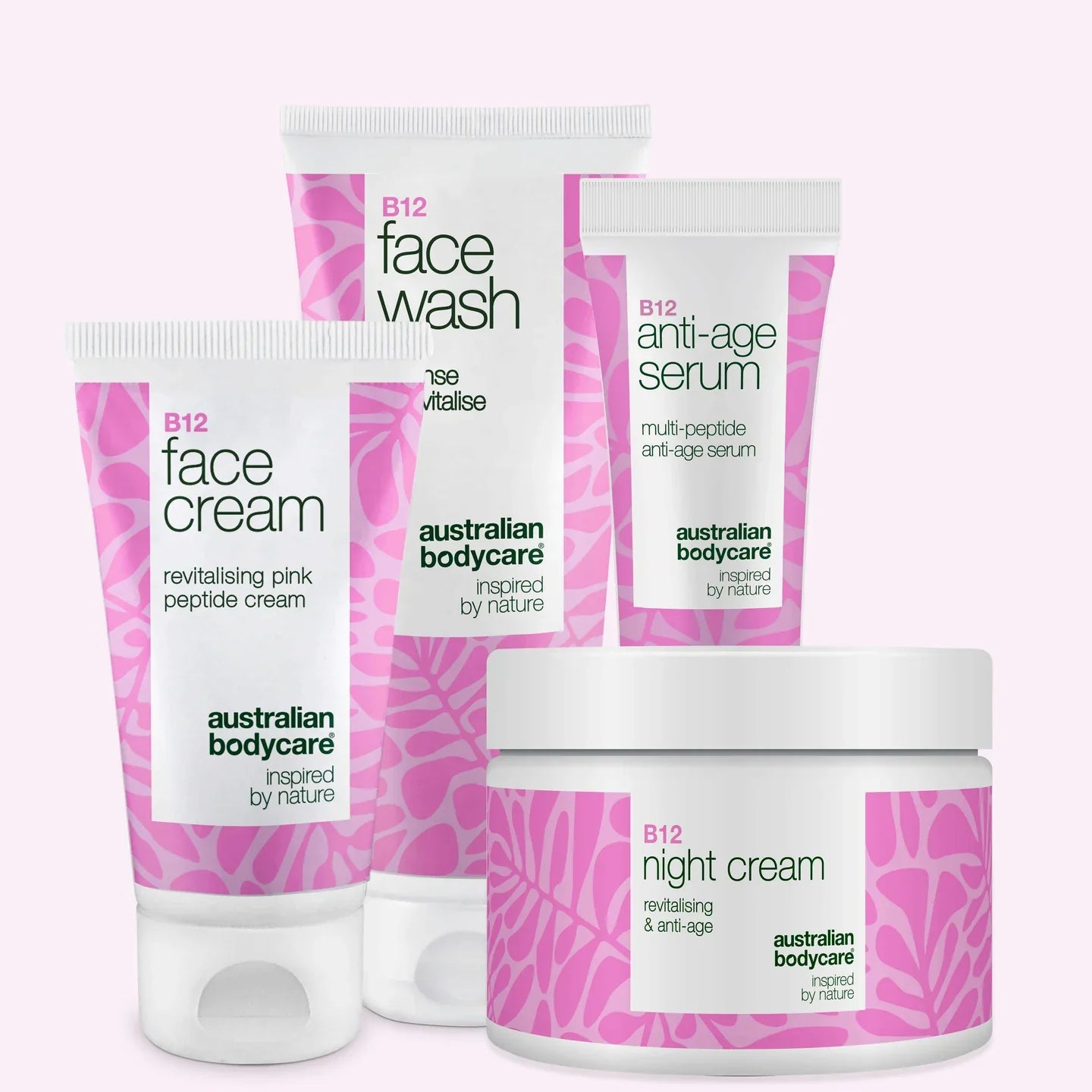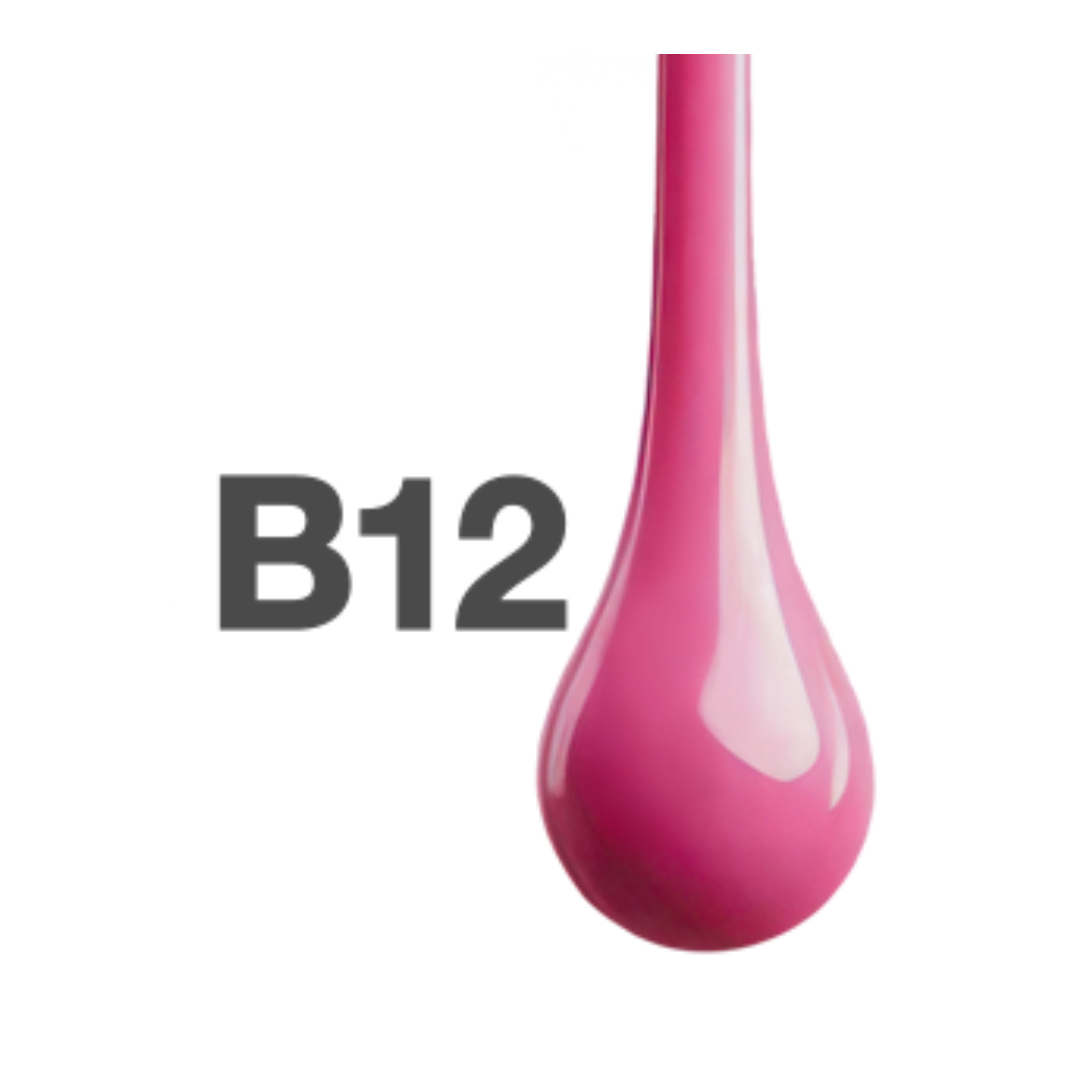Learn more about the different types of eczema
Eczema is a very common skin condition that both children and adults are affected by. There are several different types of eczema, with just as many different causes. Fortunately, there are good options for treating the symptoms of eczema.
Jump to: Treatment of eczema
Table of contents
What's eczema - and who gets it?
Eczema is a very common skin condition that affects many people of both sexes and all age groups. It is estimated that more than 10% of the population suffer from some form of eczema. Despite the high numbers, eczema is by no means contagious.
Many people get eczema once or a few times in their lives, while others suffer from eczema to a greater or lesser extent throughout their lives.
When you have eczema, your skin becomes red and itchy and may swell. Later, the skin may become dry and scaly, and painful cracks may appear. In eczema, there is inflammation of the outermost barrier of the skin. Dermatitis is the Latin term for inflammation of the skin, which is why eczema is often called dermatitis.
You can get eczema anywhere on your body and face. The causes of different types of eczema are different, and different types of eczema can occur in different parts of the body.
Some types of eczema are more common in some groups than others. For example, atopic eczema, also known as paediatric eczema, is particularly common in children. And slightly more women than men get contact dermatitis, perhaps because women are more likely to come into contact with nickel through jewellery and cleaning products.
Different types of eczema
The general symptom of eczema is a skin change with reddening of the skin, skin irritation and itching. In addition, in some cases, there may be bumps or blisters on the skin, which may contain whitish or yellowish pus. The skin may also be scaly and swollen. In chronic eczema, the skin may also thicken and crack.
In general, most people with eczema find that symptoms are worse in winter and better in summer. This is due to low humidity, dry air, cold and windy conditions in winter, while during summer the sun is beneficial to eczema skin - if the sun is enjoyed to a reasonable extent.
Eczema is very much a hereditary condition. If the parents have allergies or eczema, the children are very likely to have eczema too. In addition, environment also plays a role. For example, it is thought that pollution and exposure to many different substances means that there are significantly more people with allergies today than there used to be.
Eczema can be caused by internal (endogenous) factors. These include types such as atopic eczema, dandruff eczema, stasis dermatitis and pimple eczema. Eczema can also be caused by external (exogenous) factors. Examples include contact dermatitis and hives.
Atopic eczema (childhood eczema/asthma eczema)
Atopic eczema, also called childhood eczema, asthmatic eczema or atopic dermatitis, is the most common type of eczema. It cannot be cured, but the symptoms - dry and itchy skin - can be relieved.
Around 15% of children and adolescents suffer from atopic eczema. Fortunately, around 60% of children and young people with atopic eczema outgrow the condition by puberty. However, as adults, they still have an increased risk of developing hand eczema. Therefore, they should avoid as much as possible jobs where their hands are exposed to soap, water, chemicals and other substances.
Most people with atopic eczema have had their first outbreak when they were very young, often within the first year of life.
In very young children up to 1-2 years of age, eczema is most common on the cheeks, chin, backs of the hands and the extensor sides of the arms and legs. Later, it mainly affects the backs of the knees, elbows, wrists and ankles. In older children and adults, it is often on the face, especially around the eyes, neck and upper body. Adults with atopic eczema also often develop hand eczema on the back of the hand and between the fingers.
In children with atopic eczema, the skin's ability to fight bacteria and viruses is reduced. They are therefore more likely to get cold sores and staphylococcal infections, for example.
Atopic eczema is a hereditary disease, like hay fever and asthma. If you have one of the three diseases, you are at high risk of getting one of the others and you are also at high risk of passing it on to your children.
Scalp eczema (seborrhoeic dermatitis)
Scalp eczema, also known as seborrhoeic dermatitis, is a very common type of eczema, characterised by redness and dry, whitish scales or yellowish, oily scales. The scaling is typically seen on the scalp and as scaly eczema on the face, especially on the forehead, eyebrows, eyelashes and nose. In addition, dandruff eczema can also be seen on the chest, back and armpits, and around the navel and groin.
READ MORE: How to treat dandruff
Dandruff is often seen in babies and in younger men and adults in general. In general, many people suffer from dandruff. Dandruff is caused by a yeast fungus that lives in the oily skin, called Pityrosporum Ovale.
READ MORE: How to get rid of Serborrheic Dermatitis
Stasis dermatisis
As you get older, your skin becomes thinner and more easily damaged. This can cause small cracks in the skin or leg ulcers. Stasis dermatitis occurs on the lower legs and is often associated with swelling and varicose veins. The eczema causes itching, reddening of the skin, scaling and small blisters.
Stasis dermatitis affects women over the age of 60 in particular.
Nummular eczema
Nummular eczema is characterised by round, coin-shaped red patches that itch. The eczema is mainly seen on the arms, legs, hands, feet and the rest of the body.
Nummular eczema particularly affects people over the age of 50, and more often men than women. The cause of eczema is unknown, but dry skin and stress can be triggers.
Contact dermatitis
Contact dermatitis occurs when you have been in contact with a substance you cannot tolerate. Contact dermatitis can occur because you are allergic to a particular substance. Contact dermatitis can also be toxic/irritant due to contact with something that is toxic or irritating to the skin. Photocontact dermatitis is triggered by light.
Contact dermatitis is most commonly seen on the hands and the most common form of contact dermatitis is nickel allergy/nickel dermatitis. Contact dermatitis causes itching and redness of the skin. In acute contact dermatitis, red fluid-filled blisters and sores may appear. In chronic contact dermatitis, the skin is dry and scaly with cracks.
Hand eczema is two to three times more common in women than in men and is particularly common in the 20-40 age group.
The causes of irritant contact dermatitis are often contact with water, soap, food, oil and other substances. Allergic contact dermatitis is often caused by allergies to metals such as nickel, rubber, perfumes, preservatives, cosmetics and others.
If contact dermatitis is suspected, it is important to have an allergy test so that you can avoid contact with the allergy-causing agent in the future.
Hives
Hives affects many people and presents as an itchy rash on the skin. Anyone can get hives. While acute hives most commonly affect children, chronic hives are more common in adults. Women are three times more likely to get hives than men.
It is not always known what triggers an outbreak of hives, but causes can include medication, infections, allergies to foods, preservatives and colourings, cold, sun, heat, stress, insect bites and many others.
Solar eczema
Solar eczema is a slightly different type of eczema that affects about 15% of the population in Scandinavian countries during the spring and summer months. As many as 85% of those affected are girls and women aged 10-30 years. Light skin types are more likely to develop sun eczema than darker skin types.
It is caused by hypersensitivity to the invisible ultraviolet rays of the sun. Symptoms include itching and a reddish skin rash with small bumps or blisters.
Treatment of eczema
It is important to seek treatment for your eczema, as untreated eczema can get worse and untreated allergic eczema can become chronic. Some types such as sun eczema, hives and contact dermatitis can resolve on their own, while other types such as atopic eczema do not go away on their own.
The typical symptoms of eczema - dry, itchy and scaly skin - can be treated. Different types of eczema can look different and have different causes, but there are many common features of treatment.
In general, it is important to keep the skin soft and moisturised so that it doesn't dry out and crack. There are different types of cream that are particularly suitable.
Long hot baths are great, but they irritate and dry out the skin, so it's a good idea to turn the temperature down a little when you're in the bath - and to shorten your bathing time.
Find products for eczema here.
Treatment with cream
Eczema skin is more prone to drying out than normal skin. It is therefore essential to constantly moisturise the skin with a good (unscented) moisturiser. Use it morning and evening, both when there is an eczema flare-up and when the eczema is in a calm phase without flare-ups.
There are many good moisturisers, including natural products, that are anti-itch and anti-bacterial. For example, many people with eczema like creams containing Australian tea tree oil or aloe vera.
In most cases of eczema, it may be necessary to supplement with a cream or ointment containing adrenal cortex hormone from time to time. Adrenocortical hormone products are also often referred to as steroid creams or cortisone creams.
Read More: Cream for eczema - this is how you treat eczema with cream
Treatment of Atopic eczema
For atopic eczema, it's worth avoiding tobacco smoke and furry animals in the home, as this increases the risk of developing asthma and hay fever.
The most commonly used remedy for atopic eczema is an ointment and cream containing adrenal cortical hormone. It comes in four different strengths. If inflammation occurs in eczema-prone skin, it may also be necessary to use a bactericidal agent.
Treating scalp eczema
For dandruff on the scalp, you can use an antifungal shampoo. On the face and body, you can use a moisturising cream with an antifungal effect. In addition, an ointment or cream with adrenal corticosteroid hormone can be used for a short period of time.
Find: Cream for scalp eczema
Treatment of stasis dermatitis
For stasis dermatitis, the skin should be kept moist with a good moisturiser. In addition, a cream with adrenal corticosteroid hormone can be used. Patients with stasis dermatitis should use compression socks.
Treatment of nummular eczema
When suffering from eczema, the skin should be kept moist and soft with a good moisturiser. Long hot baths and too much soap should be avoided. In addition, it may need to be supplemented with an adrenal corticosteroid cream or ointment.
Treatment of contact eczema
With contact dermatitis, it is also important to make sure that the skin does not become dry. Regular use of a good moisturiser is therefore important. You can also treat the skin with a cream or ointment containing adrenal corticosteroids. Light treatment by a dermatologist can sometimes help the skin to heal. A tablet treatment may also be an option for chronic eczema.
As a preventive treatment, it is important to avoid the triggers that cause eczema. This can be done, for example, by using gloves or protective equipment.
Treatment of hives
With hives, it is always important to eliminate the cause, if you can find it. Hives can also be treated with antihistamines.
Treatment of solar eczema
The best treatment for sun eczema is prevention. You should protect yourself with a sun cream with a high sun protection factor, avoid spending too long in the sun and wear a light layer of clothing when you are in the sun.
Once the damage has been done and you have sun eczema, you can use a good moisturiser, preferably one with an anti-inflammatory effect. In most cases, sun eczema will resolve on its own. In more severe cases, you can supplement with antihistamine tablets and an adrenal corticosteroid cream or ointment.
Find more information here:
For further questions on the topic, we encourage you to contact your doctor.



